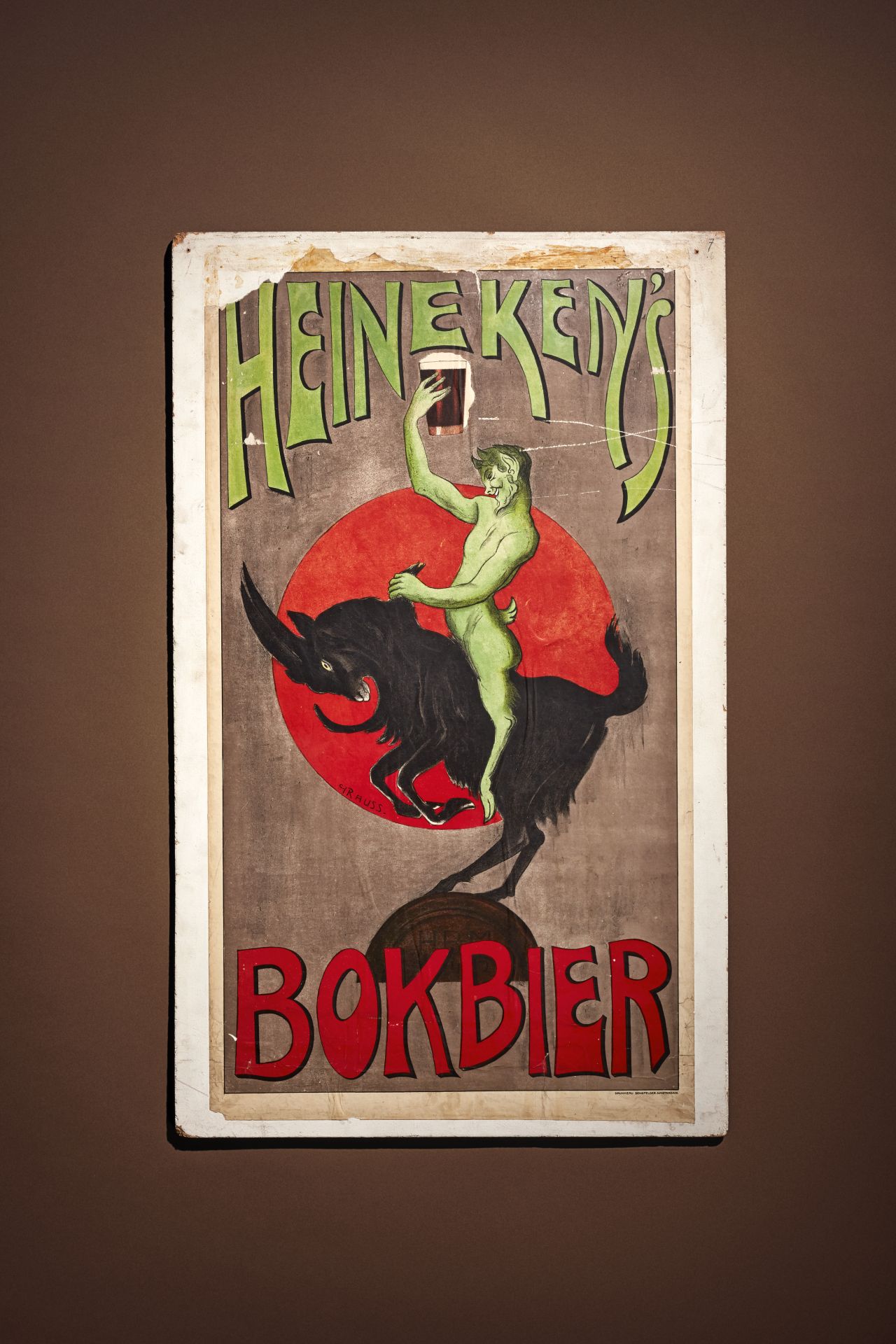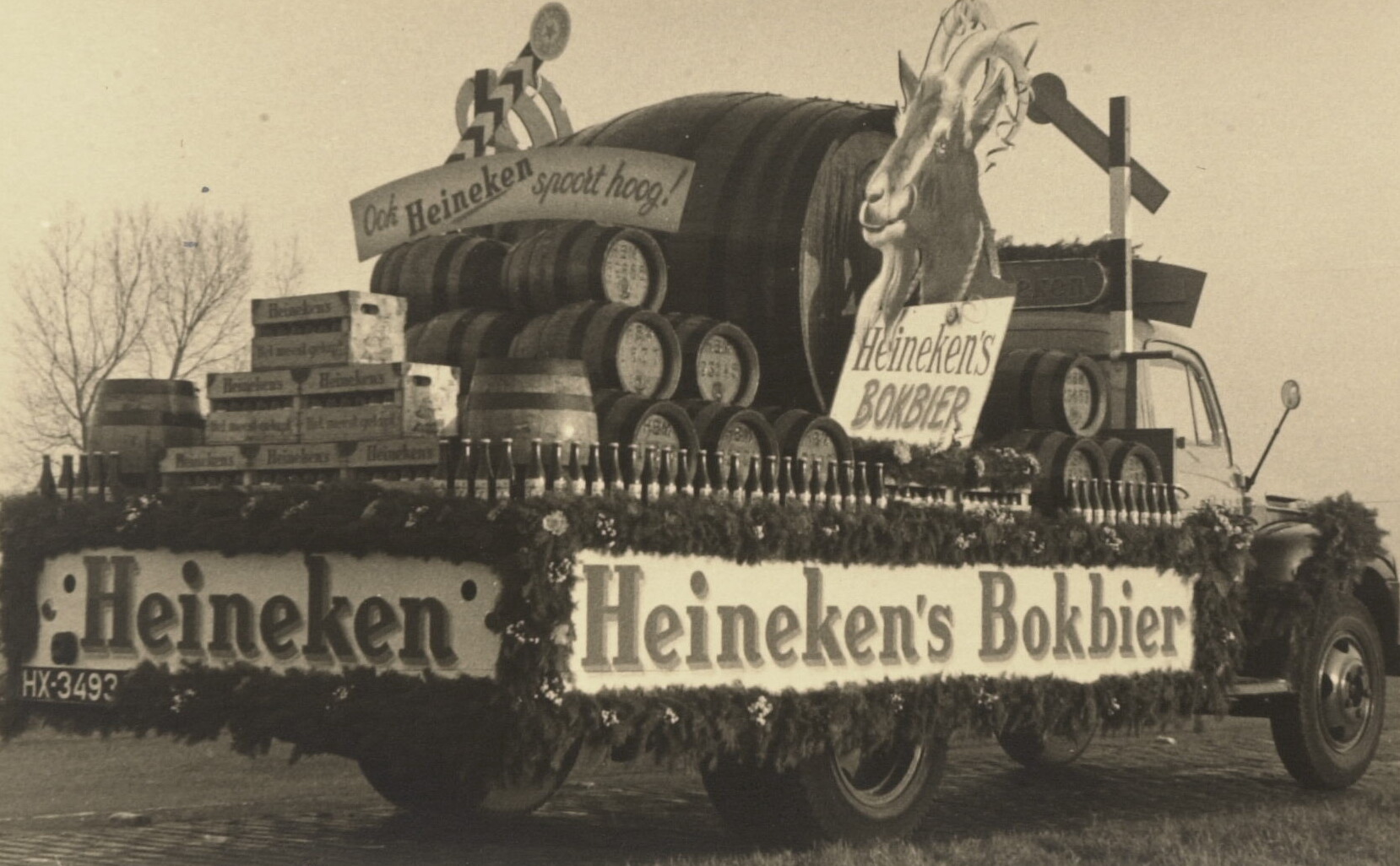INFO
Poster for Heineken’s bokbier (Heineken’s bock beer)
Designer: Geert Grauss, c. 1910; printer: Senefelder
lithograph
h 90 x w 55 cm (with wooden support)

Bock beer month
German Bockbier came to the Netherlands in the mid-19th century. In 1870, the year of its foundation, Beiersch Bierbrouwerij De Amstel (Bavarian Beer Brewery De Amstel) advertised it as a ‘winter beer.’ Traditionally, this dark-coloured beer was only brewed in winter, when it was cold enough for bottom fermentation. Due to its long maturation time of four months, February was originally the bock beer month.
Not long after De Amstel, Gerard Adriaan Heineken also began selling bock beer once his brewery had been completely rebuilt to produce German bottom-fermenting beers. With the advent of cooling systems, bock beer became available year-round. However, for marketing purposes, the brewers preferred distributing the brown beer during the autumn months, around October/November. In that slack time of year for lager, it was easier to sell a brown, somewhat sweeter beer with a drinking temperature varying between 6 and 10 degrees Celsius.

Devil’s beer
The posters and ads promoting bock beer (the German word ‘bock’ means ‘billy goat’) are always darker and more mysterious than those for pale lager. In this poster for Heineken, the Zeeland painter Geert Grauss even alluded to the devil. A horned figure with goat legs raises his beer mug on the back of a black goat, silhouetted against a red moon.
Brewery town
Despite all these eerie associations, the name ‘bock beer’ has nothing to do with goats or devils. It would appear that ‘bock’ was derived from Einbeck in Germany, which was Europe’s most famous brewery town in the Middle Ages.